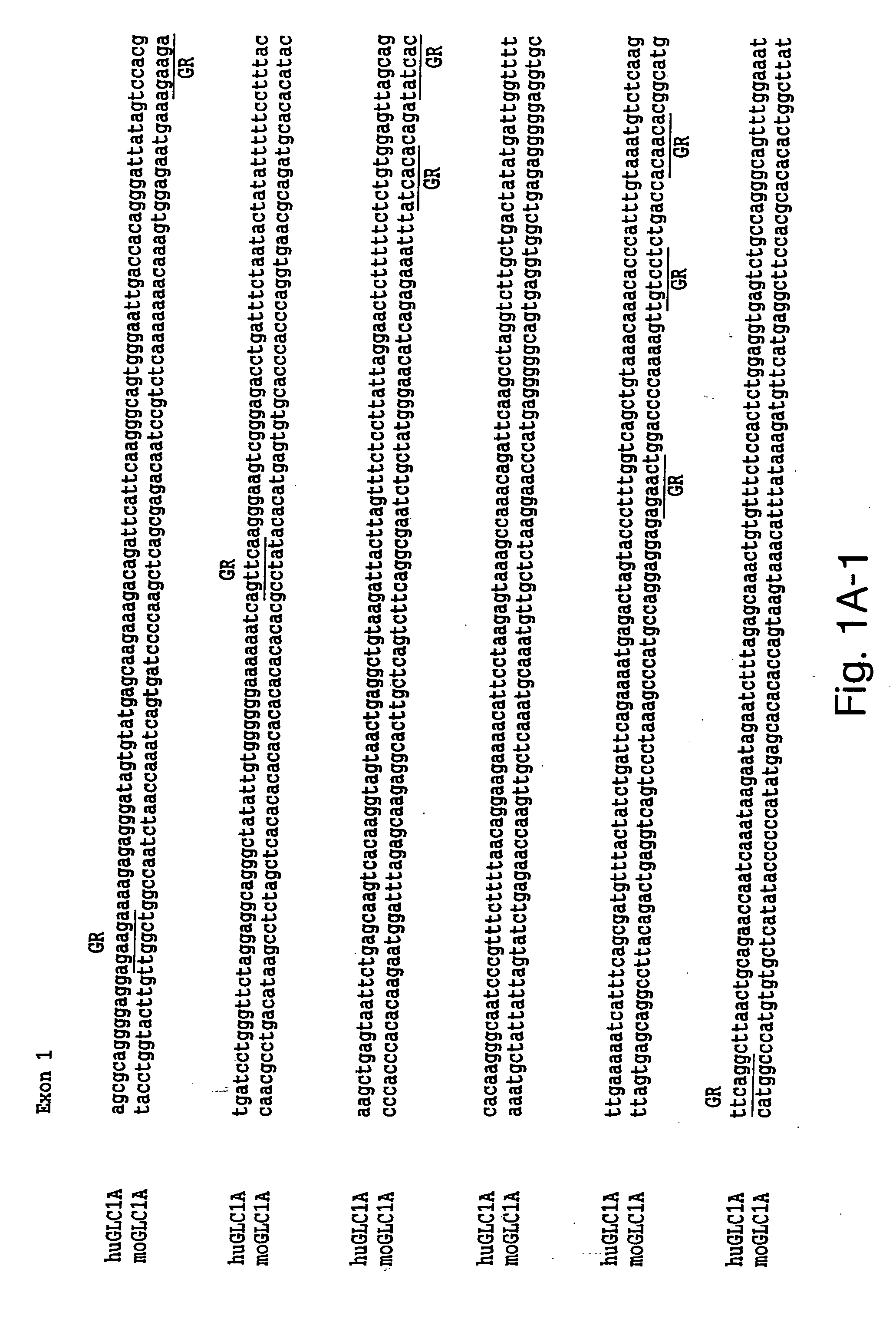Glaucoma therapeutics and diagnostics
a technology for glaucoma and diagnostics, applied in the field of optic nerve disorders, can solve problems such as loss of central vision, and achieve the effect of preventing glycosylation of proteins and preventing interaction of proteins
- Summary
- Abstract
- Description
- Claims
- Application Information
AI Technical Summary
Benefits of technology
Problems solved by technology
Method used
Image
Examples
Embodiment Construction
[0023] 4.1. General
[0024] As reported herein, a genetic locus associated with JOAG was identified on chromosome 1q21-q3 1 by genetic linkage analysis. Observed recombinations between the glaucoma phenotype and highly polymorphic genetic markers in two large JOAG kindreds allowed the interval containing GLC1A gene to be narrowed to a 3 cM region of chromosome 1q between markers D1S3665 and D1S3664. Further evaluation of marker haplotypes revealed that each of three pairs of glaucoma families shared alleles of the same eight contiguous markers suggesting that the GLC1A gene lies within a narrower interval defined by D1S1619 and D1S3664.
[0025] Several genes mapping to the GLC1A region of chromosome 1 were considered as candidates for the disease-causing gene. Three genes (LAMC1 (H. C. Watkins et. al., (1993) Hum. Mol. Genet. 2: 1084), NPRI (D. G. Lowe et al., (1990) Genomics 8:304), and CNR2 (S. Munro et al., (1993) Nature 365:61), were excluded from the candidate region by genetic l...
PUM
| Property | Measurement | Unit |
|---|---|---|
| temperature | aaaaa | aaaaa |
| temperature | aaaaa | aaaaa |
| temperature | aaaaa | aaaaa |
Abstract
Description
Claims
Application Information
 Login to View More
Login to View More - R&D
- Intellectual Property
- Life Sciences
- Materials
- Tech Scout
- Unparalleled Data Quality
- Higher Quality Content
- 60% Fewer Hallucinations
Browse by: Latest US Patents, China's latest patents, Technical Efficacy Thesaurus, Application Domain, Technology Topic, Popular Technical Reports.
© 2025 PatSnap. All rights reserved.Legal|Privacy policy|Modern Slavery Act Transparency Statement|Sitemap|About US| Contact US: help@patsnap.com



